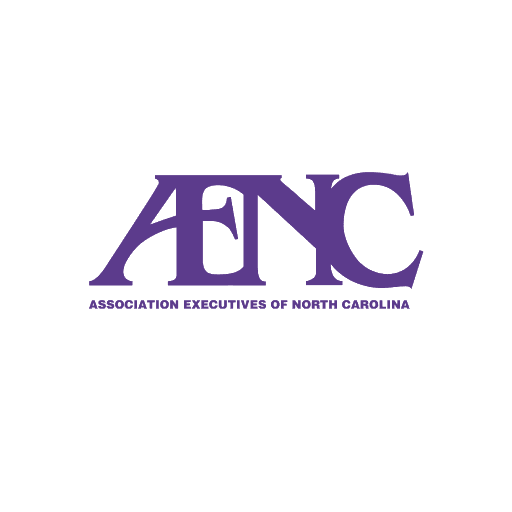How audio visual charlotte nc engages audiences with interactive technologies
Understanding the Addition of Audio Visual Technology in Today's Educational Environments
The combination of audio-visual modern technology in instructional setups has changed the teaching and finding out process. Educators currently have access to tools that accommodate various learning designs, improving student involvement and cooperation. Nonetheless, the unification of these technologies provides both opportunities and difficulties. Comprehending just how to efficiently execute these tools is necessary. What strategies can instructors use to take full advantage of the advantages of audio-visual modern technology in their class?
The Development of Audio-Visual Technology in Education And Learning
As academic needs developed over the decades, audio-visual modern technology went through substantial transformations that improved the discovering atmosphere. Initially, devices such as film projectors and slide programs were the main methods of incorporating visual aspects into class. These early modern technologies supplied teachers with the ability to present details dynamically, yet they were limited in availability and interactivity.
With the advent of video cassette recorders in the 1970s, classrooms started to integrate recorded lessons, broadening the extent of academic sources. The intro of desktop computers in the 1980s further reinvented this landscape, permitting the development of multimedia discussions and interactive learning experiences.
The increase of the web in the 1990s marked a zero hour, enabling real-time accessibility to a wide range of audio-visual products. Today, electronic devices such as interactive white boards and on the internet understanding platforms remain to enhance the instructional experience, cultivating involvement and partnership amongst learners.
Benefits of Audio-Visual Devices for Diverse Learning Styles
Audio-visual tools play a necessary role in satisfying diverse discovering designs by enhancing aesthetic understanding and boosting auditory involvement. By including pictures, video clips, and sound, these technologies develop a more inclusive academic atmosphere. This diverse technique allows instructors to deal with the diverse choices and requirements of pupils efficiently.
Enhancing Visual Knowing
Involvement in the learning process is considerably enhanced with using audio-visual tools, catering to numerous learning designs. These tools, such as video clips, infographics, and interactive presentations, supply visual stimulations that help comprehension and retention. Visual learners, particularly, gain from the consolidation of pictures and computer animations, which can streamline complicated principles and enhance understanding. Additionally, audio-visual sources can show real-world applications, making discovering more pertinent and appealing. By incorporating shade, activity, and noise, educators can produce a vibrant knowing atmosphere that catches pupils' focus and cultivates much deeper cognitive links. Ultimately, the tactical use audio-visual innovation not only supports visual learning but additionally enhances the overall instructional experience for varied students.
Improving Auditory Involvement
A substantial advantage of incorporating audio-visual tools in education and learning is their capability to enhance auditory interaction among students. These tools, which encompass multimedia discussions, podcasts, and interactive audio elements, deal with different learning styles, specifically profiting auditory learners (audio visual charlotte nc). By incorporating audio and narrative, educators can create immersive experiences that record students' focus and strengthen understanding. This engagement is necessary, as it promotes a much deeper understanding of the material and promotes retention. Furthermore, audio-visual tools can help with collective understanding environments, encouraging students to take part in conversations and share their insights. Eventually, the incorporation of audio-visual innovation not only supports acoustic interaction however additionally enriches the general academic experience, making discovering more vibrant and effective for all students
Enhancing Involvement Via Interactive Discovering

Gamification aspects, such as tests and simulations, can improve motivation and retention, making discovering much more satisfying and efficient. These approaches not just stimulate cognitive involvement but likewise deal with diverse knowing styles, guaranteeing that all trainees can take part meaningfully. Therefore, interactive knowing atmospheres promote a sense of community and belonging, eventually causing boosted academic results. With the assimilation of audio visual technology, educators can transform conventional class right into lively areas where pupils prosper and proactively form their educational journeys.
Linking Theory and Practice With Multimedia Resources
Multimedia sources serve as a critical web link in between academic concepts and functional application in academic settings. By boosting interaction, helping with collaborative discovering experiences, and supporting diverse knowing designs, these tools develop a much more comprehensive and dynamic discovering setting - audio visual charlotte nc. This method not only fosters much deeper understanding yet likewise prepares students for real-world difficulties

Enhancing Engagement Through Multimedia
Interaction in instructional setups greatly increases when trainers include multimedia sources into their training techniques. Using video clips, podcasts, and interactive presentations boosts the learning experience, allowing pupils to get in touch with the product on multiple degrees. Multimedia sources deal with different learning designs, supplying visual, auditory, and kinesthetic stimulations that can hold students' attention better than conventional lecture methods. Furthermore, these resources can streamline complicated ideas, making them extra available and remarkable. By incorporating multimedia, instructors can create a vibrant classroom setting that fosters interest and encourages students. Ultimately, the calculated usage of audio-visual modern technology offers to connect the void in between theoretical knowledge and sensible application, enhancing the academic experience for both trainers and students.
Helping With Collaborative Understanding Knowledge
Various research studies indicate that collective learning experiences markedly improve trainee results when incorporated with multimedia resources. Multimedia tools promote communication among students, allowing them to participate in problem-solving and vital thinking jointly. By making use of video conferencing, collective platforms, and interactive presentations, instructors develop environments for synergy and shared knowing. These modern technologies enable pupils to connect their ideas efficiently and receive instant feedback, promoting a deeper understanding of the subject. Furthermore, multimedia sources can offer intricate concepts in more digestible formats, advertising discussion and cooperation. Therefore, the mix of joint discovering and audio-visual technology not only improves the instructional experience however additionally prepares students for real-world synergy characteristics, highlighting the importance of collaboration and cumulative understanding building.
Supporting Diverse Knowing Styles
While traditional training approaches usually see here provide to a restricted range of learning preferences, the integration of audio-visual modern technology provides a much more comprehensive approach to education. By using multimedia resources such as videos, interactive simulations, and digital presentations, teachers can address various learning styles, including aesthetic, auditory, and kinesthetic. This adaptability enables differentiated direction, allowing pupils to engage with web content in ways that reverberate with their specific choices. Furthermore, audio-visual tools can assist in much deeper understanding by supplying numerous representations of complicated ideas. As a result, pupils that might battle with traditional approaches can discover alternative paths to success, promoting an extra fair knowing setting that supports academic achievement for all students.
Obstacles in Carrying Out Audio-Visual Modern Technology
Audio-visual innovation holds fantastic pledge for improving academic experiences, its implementation commonly runs into substantial challenges. One key concern is the economic concern related to acquiring and maintaining such equipment, which can strain budget plans, specifically in underfunded institutions. Furthermore, inadequate training for educators can impede efficient assimilation, leaving them ill-prepared to use the technology completely. Technical issues, such as software program breakdowns and compatibility problems, might also disrupt lessons and irritate both educators and students. Varying levels of trainee access to innovation outside the classroom can produce variations in discovering opportunities. The possibility for over-reliance on technology might detract from necessary teaching methods, inevitably check here restricting the instructional experience. Attending to these challenges requires a comprehensive technique, consisting of adequate financing, specialist growth, and equitable accessibility to resources, to ensure that audio-visual innovation can be leveraged properly in today's academic setups.
Ideal Practices for Integrating Technology in the Class

Furthermore, cultivating an interactive environment with collaborative tools urges student involvement and engagement. Making use of diverse audio-visual resources provides to different learning designs, fitting visual, auditory, and kinesthetic students. Frequently reviewing the effect of technology on trainee learning helps educators fine-tune their approaches and adjust to altering needs. Including trainees in the option of technology promotes ownership and inspiration. By adhering to these finest methods, teachers can produce a dynamic class environment that efficiently integrates technology and improves the educational experience for all pupils.
The Future of Audio-Visual Innovation in Education
As class significantly accept innovation, the landscape of audio-visual tools in education and learning remains to evolve (audio visual charlotte nc). Future innovations are expected to concentrate on better interactivity and personalization, permitting educators to tailor discovering experiences to private trainee requirements. Developments such as augmented reality (AR) and virtual reality (VR) will likely give immersive learning settings, improving trainee interaction and understanding
Synthetic knowledge (AI) is poised to play a considerable role in audio-visual modern technology by providing real-time responses and flexible knowing pathways. This integration might assist educators recognize and address trainee obstacles more effectively. Cloud-based platforms will promote easier access to resources and partnership among trainees and educators, no matter place.
In addition to these technical advances, specialist advancement for educators will be essential, ensuring they are geared up to use these devices properly. Generally, the future of audio-visual modern technology in education and learning guarantees to produce more dynamic, comprehensive, and impactful learning experiences.
Often Asked Inquiries
Exactly How Can Teachers Select the Right Audio-Visual Devices for Their Class?
Picking suitable audio-visual devices requires educators to assess their instructional objectives, consider trainee requirements, review offered Continued innovation, and seek referrals from peers or specialists, ensuring tools effectively improve knowing and engagement within their particular class atmosphere.
What Spending plan Considerations Are There for Carrying Out Audio-Visual Technology?
Spending plan considerations for executing audio-visual modern technology include preliminary purchase expenses, maintenance expenses, training for staff, and prospective software licensing fees. Furthermore, lasting investment in updates and replacements need to additionally be factored right into economic planning.
Are There Certain Training Resources for Teachers on Audio-Visual Devices?
Numerous institutions provide training sources for instructors on audio-visual tools, consisting of online training courses, workshops, and training guides. These sources intend to boost educators' abilities and self-confidence in properly incorporating technology right into their mentor techniques.
How Do We Measure the Performance of Audio-Visual Innovation in Understanding?
Determining the performance of audio-visual innovation in learning involves examining pupil interaction, understanding, retention prices, and total scholastic performance. Surveys, analyses, and empirical researches can offer useful understandings into its influence on instructional end results.
What Prevail Misconceptions Regarding Audio-Visual Modern Technology in Education And Learning?
Usual misconceptions regarding audio-visual modern technology in education and learning include the belief that it assures involvement and finding out outcomes, as well as the presumption that all students profit equally, neglecting specific knowing preferences and demands.